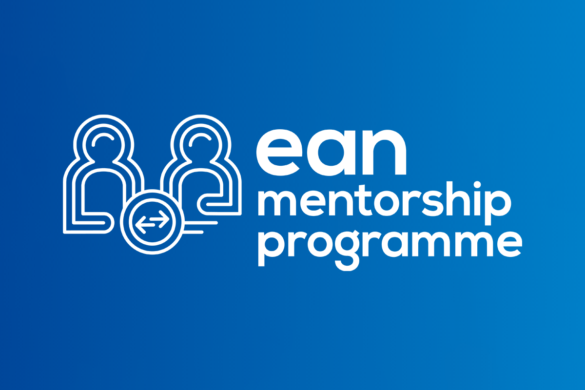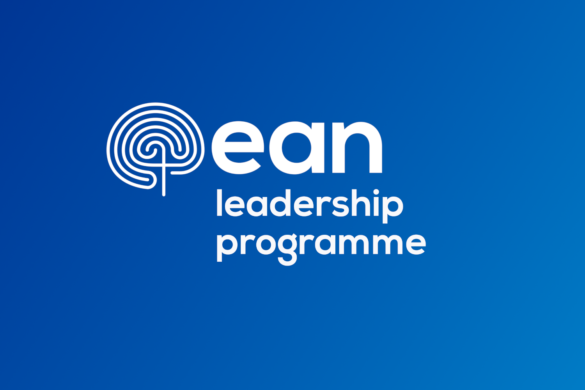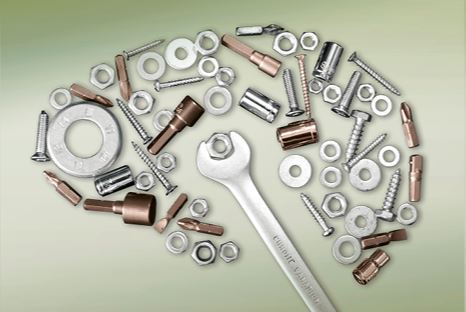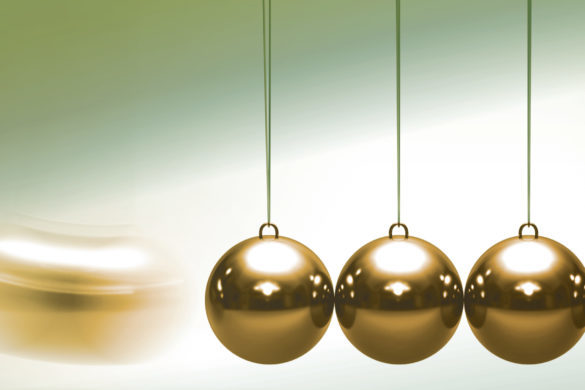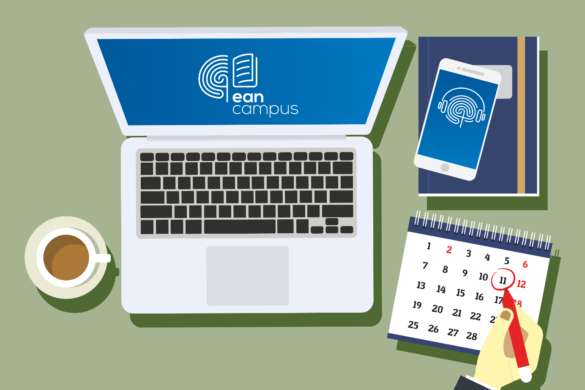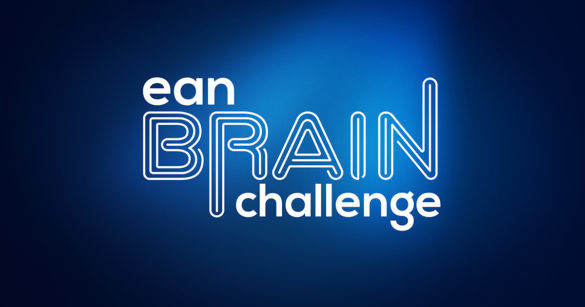Report from Maliia Dragos Mihai from Romania visiting the University-Hospital Freiburg, Center for Epilepsy in Freiburg, Germany under the supervision of Professor Schulze-Bonhage.
My name is Maliia Dragos Mihai and I am a neurology resident in Bucharest, at Universitary Emergency Hospital, currently in my third year of training. My passions and my professional duties revolve around general neurology but also non-invasive and invasive presurgical evaluation for pharmacoresistant epilepsy in Romania’s epilepsy surgery program, supervised by Dr. Ioana Mindruta and Professor Dr. Ovidiu Bajenaru. I was fortunate enough to receive a departament to department co-operation grant from behalf of the EAN, which I completed in Freiburg’s Epilepsiezentrum at Uniklinik, under the well-apreciated guidance of Prof. A. Schulze Bonhage and his wonderful team during the 19.01.2015-19.03.2015 period. Here is my report on the activities I have performed here.
My stay was divided between a clinical and a scientifical part. For the first one I tried to experience the most of what this highly specialised institution regards as a routine. Every day I participated at the patients’ visit and at the EEG rounds. On a weekly basis I was also present at the neuroradiological discussions and at the case presentations session. I have put a special emphasis on the intracranial explorations performed here during my stay and assisted closely to their implantation, monitoring, neurostimulation but also to the ressection procedures in the operating theater alongside the neurosurgeons.
For the scientifical part I closely collaborated with my friend and colleague Dr. Cristi Donos who was doing a postdoc internship here. He had previously worked on a nonlinear classifier to detect seizures‘ onset in a closed loop implantable recording system. I have proposed to him to modify the script for a different purpose, mainly to predict the seizure type (subclinical, simple partial, complex partial and secondary generalised) from the first seconds of electrical activity , which has not been undertook in the literature so far. We had excellent results: on a big patient lot from the Freiburg database (18 patients, 400 seizures) the accuracy was between 70-80%, using only one intracranial EEG channel and 3 sec of ictal recording. Supplementary to being a proof a concept this program could pottentialy have multiple application: saving battery life in an implantable device (not trying to stimulate detected subclinical events), allerting the patient to sit down because he/she will loose their consciousness in the next period, calling a caregiver or an ambulance extremely fast, sometimes even before the seizure has time to generalise. We are now working intensily on putting it in an article format so it can be published in an international peer reviewed journal. Besides that the medical collective here was very interested on my previous research and invited me to give a number of talks on my earlier projects. I am very confident that the ties created during my stay will proof to be long lasting and a very fertile collaboration between our centers is about to start.
In summary, I believe I have benefited a great deal from your generous decission, and hopefully the hosting center’s members agree with my view. I am truly grateful to the judging committe for this offer and I hope I can only repay you with the high quality scientific work that will be the direct output of my stay.
Most sincere regards,
Mihai
****************************************
Report from Vaidas Matijošaitis from Lithuania visiting the Haukeland University Hospital, Department of Neurology, Bergen, Norway under the supervision of Professor Ole-Bjorn Tysnes.
I’ve spend 6 weeks from 04 May 2015 till 12 June 2015 at the department of Neurology in Haukeland university hospital, Bergen, Norway.
I should say that this visit was very useful for me in several aspects. First, I gained very useful experience in stroke diagnostics and management. As I’ve spend most of the time in stroke unit, I’ve learned much about Norwegian system of diagnostics and management of stroke. Thanks to the chief of the stroke unit Halvor Ness, I’ve participated in everyday stroke unit life. He and his colleges showed high professional knowledge and I’ve seen many interesting cases in stroke diagnostics and management. I’ve experienced that diagnostics in stroke as well as management are going together with the progress of technology and science. I’m also very grateful to other colleges in stroke unit for sharing their knowledge and investigating interesting cases with ultrasound diagnostics. This visit lets me start doing some diagnostic procedures as I’m more confident now. This I could say about patent foramen ovale TCD or TCSS diagnostics and contrast enhanced TCCS. I think that this experience could let me diagnose some specific issues in stroke better.
I appreciate special attention of the chief of the department Ole-Bjorn Tysnes to my interest in ALS patient’s diagnostics and management. I think that I’ve learned more about the way multidisciplinary team should work and looking forward to use my knowledge in Lithuania.
The only thing which was sometimes causing some inconvenience is my lack of better Norwegian language knowledge. Usually all doctors spoke to me English, but most of the presentations and discussions were in Norwegian language. So knowing at least basics of Norwegian language would be big advantage.
So to conclude, visiting department of neurology in Haukeland university hospital was a useful experience which will help me to improve my practice. I’ve made interesting and useful connections with neurologists in Norway. I would recommend it to other colleges who would like to increase their knowledge.
Sincerely, Vaidas Matijošaitis
**************************************
Report from Milorad Vujnic from Bosnia and Herzegovina visiting the Center for myopathies of the Neurology Clinic, Clinical Center Serbia in Belgrade under the supervision of Professor Vidosava Rakocevic Stojanovic.
It was my pleasure and honor to spend eight weeks in the Center for myopathies of the Neurology Clinic, Clinical Center Serbia in Belgrade.
During this period I learned a lot about different types of inherited and acquired muscle disorders such as myothonic dystrophies type 1 and type 2, limb-girdle muscular dystrophies, neuromytonia, different types of myositis etc. I was included in everyday clinical work with patients, which improved my skills in diagnosis and treatment of these patients. I also spent some time in EMG laboratory and learned basics of this diagnostic method.
Besides practical part of my stay in Belgrade, I also made connections with my colleagues and we are planning to collaborate in the field of neuromuscular disorders. At the moment I am preparing my PhD thesis about metabolic syndrome in myothonic dystrophies with Prof. Vidosava Rakocevic Stojanovic, who became my PhD mentor during this stay.
Now, I am able to apply the knowledge which I gained at the Neurology Clinic in Belgrade in my country. This is the most valuable benefit of my stay in Belgrade.
At the end, I would like to thank the EAN for this opportunity to improve my knowledge and practice in favour of my patients. Especially I would like to thank Prof. Vidosava Rakocevic Stojanovic and all colleagues working at the Center for myopathies for their hospitality.
Milorad Vujnic, MD, MSc
**************************************
Report from Csilla-Johanna Nagy from Romania visiting the Danish Epilepsy Centre, Department of Clinical Neurophysiology, Dianalund, Denmark under the supervision of Professor Sandor Beniczky.
My name is Nagy Csilla-Johanna and I am neurology resident in Romania, in my fourth year of training. Currently I work in the Epilepsy and Sleep Monitoring Unit from University Emergency Hospital Bucharest under the guidance of Dr. Ioana Mandruta and Prof. Dr. Ovidiu Bajenaru. Within the fascinating field of neurology my special interest is represented by epilepsy.
In my first year of residency I realised that in my country we have a big deficit in specialists in this field and this is in the detriment of the patients sufering from epilepsy. That’s why I left my hometown Brasov where I began my residency and moved to our capital city where I have the chance to learn from the best specialists in this field from my country. Here I am involved in the diagnosis and treatment of epilepsy and the presurgical evaluation and surgical treatment of drug resistant epilepsies. My supervisors always encourages me and my collegues to apply for learning opportunities and to learn from other centers experience. That’s how I applied for the EAN Department to Department Programme.
I was accepted by the Danish Epilepsy Centre, Department of Clinical Neurophysiology, Dianalund, Denmark as hosting department and thanks to the educational grant provided by the EAN, I had the opportunity to work and learn under the guidance of Sandor Beniczky and his wonderfull team during the 27.04.2015 – 30.06.2015 period.
During my stay in Dianalund I participated in the everyday activities from the department consisting of the recording and interpretation of EEG studies, including long term video-EEG recordings. I had the opportunity to see how it is organised the Epilepsy Monitoring Unit and I got some ideas how to improve the activity from our centre from Bucharest. I witnessed the sleep studies and saw the advantages of home polysomnography. I actively participated in getting and interpreting the hipnograms and multiple sleep latency testes. I attended to the electromyography and nerve conduction studies and also to the evoked potentials performed in the department. I participated to the clinical meetings where the dificult clinical cases were discussed within a multidisciplinary team. During my stay I was included in the team that participated to the epilepsy surgery meetings. The meetings took place in Rigshospitalet, Copenhagen within a multidisciplinary team bringing together the best epilepsy surgery experts from Denmark. It was a real honor to be part of that team.
This grant also gave me the opportunity to meet people involved in all the aspects of epilepsy care and also in reasearch projects related to this field. I made new friends and established contacts that I want to use for future projects. I hope this grant is just the beginning of other collaborations between our centers.
The hosting department offered me a cheap accomodation in the hospitals guesthouse (about 300 EUR/month) where I stayed with other guests. There I had facilities to prepare my meals in the common kitchen and to wash my cloths. Living there gave me the opportunity to bond friendships with other visitors. I also could take the lunch in the canteen at a special price for the hospitals employees.
During my stay I improved my theoretical and practical knowledge in the diagnosis of epilepsy, including technical aspects of the digital EEG recording and EEG reading (background activity, normal variants, interictal epileptiform discharges, ictal epileptiform activity, seizure semiology, classification, clinical significance of EEG findings, long term video EEG monitoring, reporting findings). I also learned aspects of the recent advances in conservative treatment of epilepsy as well as presurgical evaluation. It was a great opportunity to make great progresses in understanding the methods in clinical neurophysiology.
Thank you for the great opportunity and the trust invested in my with this grant and I hope I can repay you by making all the efforts to put my knowledge in the service of the patients from my country.
With respect,
Csilla-Johanna Nagy
**************************************
Report from Jasna Petreska from Macedonia visiting C.H.U. Hauetepierre Hospital, Second department of Neurology, Strasbourg, France under the supervision of Professor Edouard Hirsch.
As the visitor at C.H.U. Hauetepierre Hospital, Strasbourg, in the Second department of Neurology, I assured my choice and decision as the best one I have ever made for my education and improvement of my knowledge in the field of epileptology, and especially in EEG, as the one of the most important diagnostic methods in it.
The Second Department of Neurology is organised with 24 beds, for patients with epilepsy, for video EEG monitoring, who are admitted in the department for reevaluation of the diagnosis (for example, some older patients with diagnosed epilepsy as young children , when the diagnostic procedures for defining the etiology of the condition were limited, patients with refractory IGE, patients with unknown or some syndrome-like seizures and EEG changes), preoperative evaluation of patients with presumed (MR negative), confirmed (MR positive) structural etiology of the epilepsy or epileptic syndrome. One part of the department capacity is for postoperative monitoring of the patients (patients with hippocampal sclerosis , cortical dysplasia , cortical heterotopia etc).
The four video EEG rooms are also reserved for short EEG recording (approximately thirty minutes, both with photostimulation and hyperventilation ) of outpatients, which prof. Eduard Hirch (chief of the department) , and other doctors in the department (Dr Julia Scholly, Dr Maria Paola Valenti Hirsch, Dr Clotilde Boilde) are having in their ambulatory day in the seconda part of the working day (from 2pm utill 5pm) once a week for each doctor. In the ambulance the patients are with allready diagnosed epilepsy, most of wich are send in the Hautepierre Hospital from other nearbye citys , for a second opinion or uncertan etiology of the medical condition. In the hospital , despite the EEG , are available a lot of diagnostic (laboratory, imaging) procedures , which can help in following and management of the patients.
Although I came to France, with minimum or no knowledge of French, and with some scepsis about the English of the all personal, expecting hard communication, I was very surprised in the positive way. All the doctors, most of which are doctors of science in neurology, speak English fluently, teaching me and unselfishly sharing to me their all knowledge in English, which definitely assured my good choice. My stay there was motivation for the nurses and technicians to refresh, by reading some school books and training their English with me.
With the generosity, kindness, mindfulness in all five weeks, especially in the last three weeks, hole department , especially Professor Hirsch, Dr Julia and Dr Maria Paola, made me part of their team. In the everyday, full time working days, they gave me opportunity to start reading EEGs by myself, which after was control by them, making some corrections and explaining me the mistakes if I had made some. This was the most positive experience, without any negative or unpleasant moments, in my five years since I start my specialization in neurology.
Beside the professional part, the professors secretary was fully engaged with finding me place to stay, provide me a cart for lunch and invite me to join them in their after work informal meetings. The financial support , the grant from the EAN was almost enough for the basic needs (accommodation, using public transportation, eating).
As a conclusion I can say that my experience in the Hautepierre Hospital, in the Second Department of Neurology, was more than positive. The time I spend there was completely fulfilled and totally dedicated to my education, which after returning in my hospital (month ago) was proven by everyday working on EEG and the patients in the ambulance and the ones that are admitted in my department. All this wouldn’t have been possible without the serious and at the same time full with understanding and kindness, dedication of the doctors and other workers in the department.
And in the end , once again I must express my thanks to EAN giving me this grant and opportunity to improve my knowledge in epileptology and EEG and developing my department, and hospital as one that will be best known in EEG reading.
Sincerely Jasna Petreska




